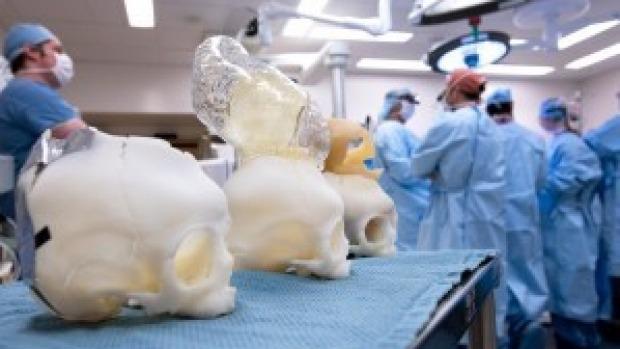Research & Markets Releases Global Perspectives for 2016-2022 on 3D Printing in North America, Europe & LAMEA Region
 Research and Markets has just released several reports, giving us a comprehensive and global perspective on the 3D printing markets around the world, now—and well into the future. Currently, we are taking a look at their analysis regarding North America, Europe, and the broad LAMEA region.
Research and Markets has just released several reports, giving us a comprehensive and global perspective on the 3D printing markets around the world, now—and well into the future. Currently, we are taking a look at their analysis regarding North America, Europe, and the broad LAMEA region.
In North America 3D Printing Market (2016-2022), the global research and analysis provider points out that both the US and Canada have been frontrunners within the industry, allowing for drastic change in the manufacturing of goods. From designing to development to production, we’ve seen a transformation all around, and more so on this continent, duly pointed out by Research and Markets because of an early adoption of the technology—making sense considering the 3D printer was created in the US.
While ‘dominating the 3D market,’ demand has sprung from the following industries:
- Healthcare
- Manufacturing
- Aerospace and Defense
- Automotive
- Construction
- Consumer Goods
- Education
It’s no surprise to hear that their research shows the healthcare sector as one of the top industries exhibiting demand for hardware, software and materials—all exemplified as we continually report on inspiring cases, from Canadian tech companies creating 3D printed prosthetics and orthotics to surgeons in Boston using 3D printed models to correct a baby’s cranial defect. Manufacturers like Stratasys are continually updating their lineup of 3D printers for the dental industry, while numerous others delve into materials, mainly metal, producing items like 3D printed titanium spinal implants.
In the automotive industry, well-known companies like BMW have been using 3D printing for decades already. While many focus on the use of the technology primarily for design and prototyping, as Research and Markets points out, many automotive manufacturers are finding that they can make quality and lightweight parts much more affordably.
“In the automotive industry, 3D printing technologies have introduced new shapes into the industry, allowing the industry to produce lighter and more complex structures at affordable price ranges,” states Research and Markets.
With products, materials, and services being the focus in the analysis, it’s important to note that this market is divided up into the following segments:
- Component
- Sub-Component
- Technology
- Application
- Vertical
Services are most in demand within the industry in North America, but the products segment should show the most accelerated growth, which Research and Markets points out being due to the great demand for desktop 3D printers.

3D Systems recently released the ProX DMP 320 3D printer, optimized for use with titanium, stainless steel, and nickel super alloy.
While in terms of materials the focus has been on polymers, there is a great and added interest also in metal and alloys too as 3D printing in metal begins to take central stage—and especially from the larger companies.
“Stereolithography, selective laser sintering, electron beam melting, fused deposition modeling, laminated object manufacturing and others are the major technologies considered while analyzing the North America 3D printing market,” states Research and Markets.
Major applications to be considered as important currently also are:
- Education/Research
- Visual Aids
- Presentation Modeling
- Fit and Assembly
- Prototype Tooling
- Metal Casting
- Functional Parts
Key corporations playing a role are 3D Systems Corporation, Arcam AB, Royal DSM N.V., ExOne GmbH, Autodesk, Inc., Stratasys Ltd., Hoganas AB, Ponoko Limited, Mcor Technologies Limited and Optomec, Inc.
It’s important to remember of course that in terms of North American 3D printing, Mexico is part of the quotient as well—and according to this report, they are projected to show the most rapid growth from this year through 2022.
Turning to Europe 3D Printing Market (2016-2022), the research shows that 3D printing and additive manufacturing have had an enormous impact as well for design, development, and manufacturing. The automotive industry especially has been a big player in Europe as the benefits of using the technology become abundantly clear, and demand increases. Here also, new shapes have been introduced, allowing automotive companies to make improved structures while also improving on the bottom line significantly.

Companies like BMW have been using 3D printing for decades already. Pictured here is a 3D printed water pump wheel component.
While growing in importance to both the automotive and healthcare sectors, rapid prototyping is still the major application for which it is employed.
“Increasing R&D expenditure in the healthcare industry and increasing demand for lightweight automotive materials is driving the 3D printing technology market in the European region,” states Market and Research.
Also looking at information from Janssen, the pharmaceutical company of Johnson & Johnson, they foresee that “the European healthcare expenditure is estimated to increase from 13% of the GDP to 18% of the GDP by 2030.” It’s important to note here that in 2014, European R&D healthcare spending reached only half of that amount.
Again, this market also is divided into the same segments as North America, again with products, materials and services as the major focus for the analysis. Materials are also divided into polymers, metals, and alloys—with polymers having been the main source of materials in 2014.
Major technologies considered were all mainly the same, along with applications. Germany was the leader in 3D printing in 2014 in term of revenue, according to this report, which also included analysis of markets also in France, the UK, Russia, Italy, Spain and all the rest of Europe.
“Italy on the other hand is expected to register fastest growth during the forecast period,” states Research and Markets.
Key corporations playing a role are 3D Systems Corporation, Arcam AB, Royal DSM N.V., ExOne GmbH, Autodesk, Inc., Stratasys Ltd., Hoganas AB, Ponoko Limited, Mcor Technologies Limited and Optomec, Inc.
LAMEA, one of the fastest-growing regions in the world, encompasses Brazil (its major portion), Argentina, Nigeria, South Africa, Iraq, Iran, Algeria, Saudi Arabia, and Egypt. Because of this, it makes sense that Research and Markets would include a report for these countries as a group also. In LAMEA 3D Printing Market (2016-2022), we see that again, healthcare and automotive are the driving forces in terms of advancement for 3D printing.
This report shows more spending on research and development and product development, accentuated by ‘rising regulatory support’ by government on all fronts, as well as major manufacturers.
“In addition, increasing purchasing power, rising government regulations to increase domestic production paired with ever-expanding dealership networks is creating a favorable environment for domestic and foreign companies to invest in the region,” states Research and Markets.
A demand for high-quality, ‘high-end’ products is on the increase, especially in countries like Brazil and South Africa. With so many new and influential manufacturing companies in both of these countries, the per capita income is higher and allows for more spending in areas like automotive.
The research company points out that data from Ernst & Young shows that in 2013, approximately 2.76 million passenger cars were sold in Brazil. For South Africa, numbers in this industry are projected to increase to 60% in vehicle sales, and 52% in production. With these figures, it’s logical that the use of 3D printing—especially in the automotive industry—will continue to increase as manufacturers seek quality and lightweight parts that are much more affordable to produce.
“Similarly, Middle Eastern countries are adopting 3D printing technology, which is cost effective and capable of generating customized parts as per the companies or end-user specifications,” states Research and Markets.

Dubai is on a mission to lead in 3D printing, and has already produced the world’s first 3D printed, fully functional office building.
This market too is divided into segments as follows: component, sub-component, technology and verticals. Again, products, materials, and services are the major areas being focused on with services leading as a priority in this market. Materials here too are divided into polymer, metal & alloy, and other. Technologies and techniques are nearly identical to the North American and European markets, as well as applications.
“For better understanding of the market penetration of 3D printing the market is analyzed based on countries including Brazil, Argentina, UAE, Saudi Arabia, South Africa, Israel and rest of LAMEA,” states Research and Markets. “In 2014, Brazil dominated the market with maximum share in terms of revenue. Israel on the other hand is expected to register fastest growth during the forecast period.”
Key corporations playing a role are 3D Systems Corporation, Arcam AB, Royal DSM N.V., ExOne GmbH, Autodesk, Inc., Stratasys Ltd., Hoganas AB, Ponoko Limited, Mcor Technologies Limited and Optomec, Inc. Discuss all of this information further in the World 3D Printing Reports forum over at 3DPB.com.
Subscribe to Our Email Newsletter
Stay up-to-date on all the latest news from the 3D printing industry and receive information and offers from third party vendors.
You May Also Like
SWISSto12 Invests in Four Metal 3D Printers from Additive Industries for RF Production
The market for 3D printing radio frequency (RF) components appears to be hitting its stride, as RF additive manufacturing (AM) leader SWISSto12 has acquired four full-sized metal 3D printers, the...
3D Printing Webinar and Event Roundup: November 17, 2024
It’s a big week in the AM industry: Formnext 2024 is finally here! But don’t worry if you can’t make it to Germany, there are still a few other virtual...
Asian Manufacturing at Formnext 2024: 3D Printing Evolution and Impact
When Formnext opens its doors in Frankfurt this November, the event will showcase how the additive manufacturing (AM) industry has matured globally. Among the 850+ exhibitors gathering at this premier...
Themes from AM Investment Strategies: Collaboration, Cost Challenges, and Expanding Markets
The 2024 Additive Manufacturing (AM) Investment Strategies event went off without a hitch. The online roundtable, hosted by AM Research (AMR) and Cantor Fitzgerald, dug into the latest trends and...





































